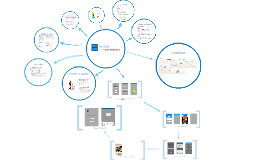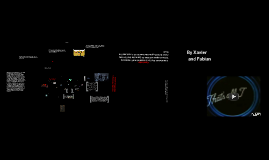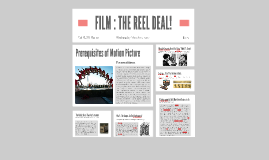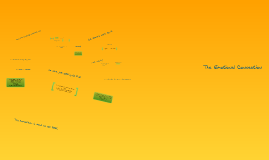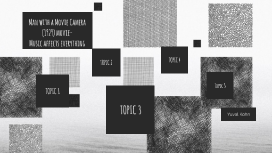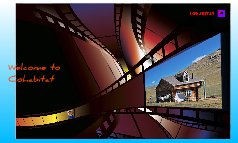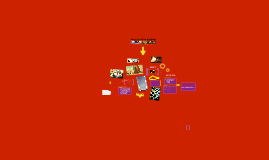FILM : THE REEL DEAL!
Transcript: Why the Nickelodeon? Shooting Stars! Wednesday March 15, 2017 Vol XCIII, No. 311 In order for film to come about there were a couple things that needed to happen. First, scientists had to discover that the human eye will perceive motion if there are a sequence of sixteen or more pictures per second. Second, cinemas would need the capacity to project an image on a surface. Third, cameras needed to be able to actually capture at least sixteen pictures per second on a clear surface, which meant a very short exposure time. Fourth, it was required that the images be printed on something flexible so that it could pass through the camera at a fast enough pace. And last, experimenters needed to find a suitable intermittent mechanism for their cameras and projectors; a strip of film sliding continuously past the gate would create a blur unless the light source was quite dim. The film had to be repeatedly stopped for a split-second exposure and then covered with a shutter as the next frame moved into place. The Move to Hollywood The End of a War, But NOT the End of Film $.05 $1.25 More Like Why Not... Wednesday March 15, 2017 The Kodak: More Than Just a Camera Quiet Confusion in the Film Industry Phenakistoscope, More like Finna' Think It's Dope! A Noun Meaning Vivid Color, AND the Name of a Company! Shooting as in Being Shot...by a Camera $1.25 The first American film companies were located in New Jersey and New York, and others emerged in Eastern and Midwestern cities. Because filmmakers filmed outside or in sun-lit glass studios, bad weather resulted in the inability to produce so the companies moved to nicer weather locations such as Florida or states further west. In the early 1910s, the Los Angeles area emerged as the major production center for the United States because of its clear weather and variety of settings. The small suburb of Hollywood was one of several where studios were established, and its name eventually came to stand for the entire American filmmaking industry. Horton Hears a Whooole Lot of Sound in Films! The introduction of sound made filming in real locations almost impossible because as soon as the director would shout “Action!”, someone nearby was bound to start digging a road or hammering metal. This forced producers to return to filming in “black box” studios, which are now called “sound stages”. Things that weren’t complications before like the whirring of cameras now were, cameras had to be concealed in boxes and those boxes had to be covered by blankets at all times. Boom operators had to hold a very large pole with a mic on the end and move it back and forth depending on who was talking and make sure to keep it out of the shot. Music at the time had to be recorded simultaneously so an orchestra was often present, placed in the perfect location to not be too loud or too quiet. Three cameras were needed for each shot instead of one so that the sound would match up with the change from wide shots to close ups of the actors. Actors needed to perform each shot in one take to ensure the sound matched seamlessly. Producers could no longer talk to the actors during a take like they did in silent films and sound actors had to talk with unnatural precision. So in a short period of time the difficulty of shooting a film went up almost too much. Luckily everyone persisted through! $1.25 Technicolor was a firm whose two-strip system had been used occasionally in Hollywood films during the 1920s and into the early sound era; however, it was expensive and it rendered colors mainly as pinkish orange and greenish blue. In the early 1930s Technicolor introduced a new system involving a camera that used prisms to split the light coming through the lens onto three strips of black-and-white film, one each for the primary colors. This technique was introduced publicly in 1932 Disney short cartoon, Flowers and Trees. The major companies all began using color, but the Technicolor company monopolized the process, supplying all cameras, providing supervisors for each production, and processing and printing the film. Today we regard color as a realistic element in films, but in the 1930s and 1940s, it was often associated with fantasy and spectacle. It could be used for exotic adventures like The Garden of Allah (1936), swashbucklers like The Adventures of Robin Hood (1939), musicals like Meet Me in St. Louis (1944). Technicolor Just kidding I Don't Mind Musicals, La La Land was Really Good! Wednesday March 15, 2017 Vol XCIII, No. 311 So Why Early Film History? Nickelodeons spread for several reasons. When film producers put aside reality for their productions and focused more on story, film became less a novelty and more a regular entertainment. People were gaining more free time to do what they wanted because of the shortening of their workweeks. Films were being rented out instead of just sold, so exhibitors could have different programs during the week instead of just one film, and patrons would return






